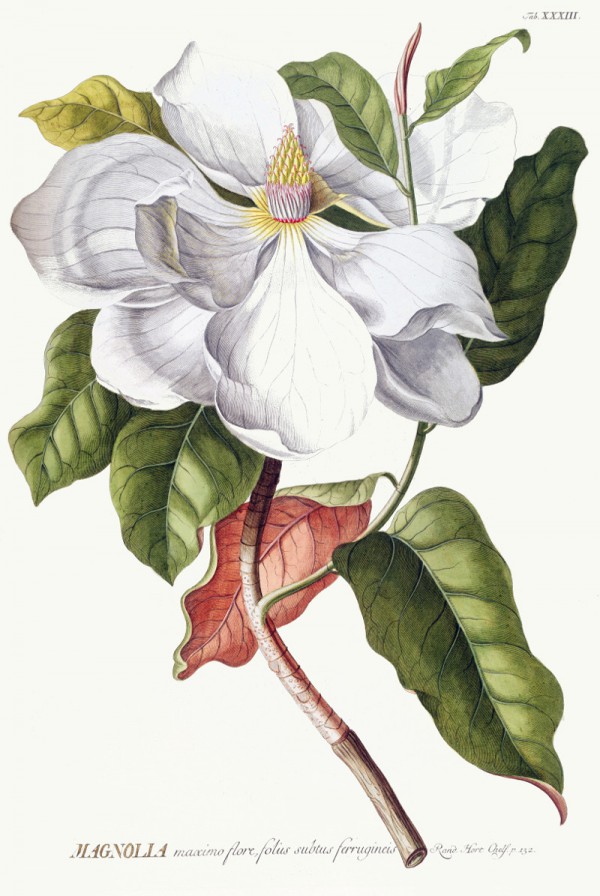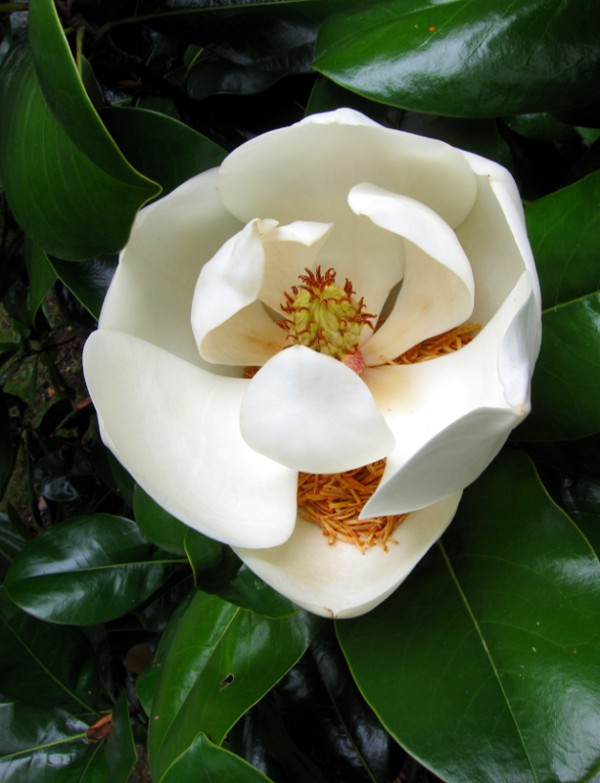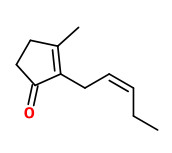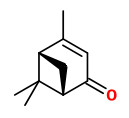Magnolia grandiflora L. - syn. Magnolia foetida (L.) Sarg. - Magnoliaceae - southern magnolia, bull bay, Immergrüne Magnolie
Evergreen tree, up to 30m high, native to southeastern North America, cultivated as ornamental; leaves large, dark green, leathery, up to 20 cm long; flowers white, fragrant, up to 30 cm in diameter. http://www.efloras.org/florataxon.aspx?flora_id=1&taxon_id=200008470
The flower scent of M.grandiflora is characterized by a high amount of (Z)-jasmone (27%, warm floral), together with verbenone (18%, minty-camphoraceous), isopinocamphone (9%, woody-camphoraceous) and myrtenol (1%), accompanied by traces of myrtenal, trans-verbenol, cis-verbanone and chrysanthenone.
[Trapping, Investigation and Reconstitution of Flower Scents, Roman Kaiser, in: Müller, P.M., and Lamparsky, D. eds. Perfumes: Art, Science and Technology. Springer Science & Business Media, Dordrecht 1994, 213-250]
Main components of the floral scent collected from M.grandiflora (dynamic headspace, Tenax TA) were geraniol (19.7%), (E)-β-ocimene (14.4%), β-myrcene (12.7%), limonene (9.9%), verbenone (5.1%), and methyl dodecanoate (12.6%). Minor components were perillene (1.5%), linalool (0.6%), nerol (0.7%), neral (0.6%), sabinene/α-pinene (3.3%), terpinolene (2.1%), β-pinene (1.5%), α-terpineol (1.0%), isopinocamphone (1.0%), methyl hexanoate (1.6%), and methyl decanoate (3.7%) e.g.
[Azuma, Hiroshi, et al. „Chemical divergence in floral scents of Magnolia and allied genera (Magnoliaceae).“ Plant Species Biology 12.2‐3 (1997): 69-83]

Trew, C.J., Ehret, G.D., Plantae selectae, vol.4, t.33 (1754)
http://plantgenera.org/species.php?id_species=634135

Magnolia grandiflora L., Immergrüne Magnolie, Copyright © 2017 Universität Freiburg (PD)
https://www.botanischer-garten.uni-freiburg.de/dateien/bilder/bilderfreiland/geografie/ostasien/Magnoliagrandiflora/view

